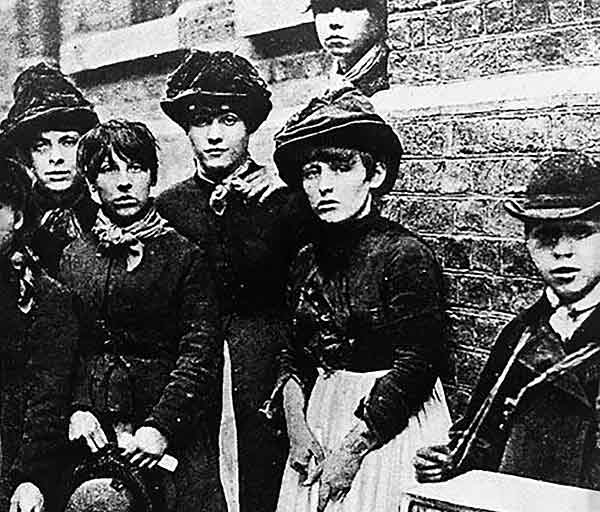Three things you might know about the 1888 Bryant and May match women’s strike, and three things you might not
The match women’s terrible working conditions are well documented …
The pitiful pay for standing at a workbench for 12 hours a day. The frequent fines for tiny offences (being late, laughing, dirty feet). The scandalous lack of concern for health and safety, with workers risking losing their fingers in dangerous machinery and, worse, developing ‘phossy jaw’, a horrific, foul-smelling cancer caused by white phosphorous, a toxic chemical that is banned in use in weapons today.
…But have you heard about the feathers?
According to historian Louise Raw, the match women had their own distinctive sense of style – all thanks to their ‘feather clubs’. They would chip in to a kitty to buy the most extravagant hats they could find and they’d share them around. If you had a date on a Friday night, you’d get a hat. Then you’d pass it on to the next girl. With all that spark and spirit and sense of community, it’s no wonder the match girls made such a success of their strike.

Annie Besant’s “White Slavery in London” article was a game-changer…
Socialist Annie Besant wrote a brilliantly brazen story about the match women: “Born in slums, driven to work while still children, undersized because underfed, oppressed because helpless, flung aside as soon as worked out, who cares if they die or go on the streets, provided only that the Bryant and May shareholders get their 23 per cent…?” This powerful prose ensured money came pouring in for the strike fund.
…But Annie shouldn’t get all the credit.
History makes out that Annie inspired the 1400 workers to strike in July 1888 but Louise Raw’s research shows the leaders were within the factory. Bryant and May had a list of five ‘trouble makers’ – Kate Slater, Alice France, Jane Wakeley, Eliza Martin and Mary Driscoll. Until then, unskilled factory workers in London’s east end had been viewed as worthless or tragic or both. When the match women came out fighting – loud and proud and showing remarkable solidarity – the middle classes realised they had wildly underestimated them. And so had their employers.
After three weeks on strike, the match women won a stunning victory
On 16 July 1888 Mr Bryant and Mr May agreed to almost all the strike committee’s demands. Fines would be abolished, wages improved and, crucially, a canteen would be provided to prevent meals being lethally laced with phosphorous. The terms were accepted and the strike ended. Days later, the Union of Women Match Makers held its first meeting. It grew rapidly and became the Matchmakers Union, open to both women and men.
…But that victory went far beyond the gates of the match factory.
Would the famous dockers’ strike of 1889 have happened if it hadn’t been for the match women? When spirits were low, dock leaders frequently used the match girls as a shining example to spur their men on. And after the dockers’ victory, a huge swathe of workers joined unions and started fighting for their employment rights. The dockers may have been their inspiration – but ultimately the match women lit the flame.